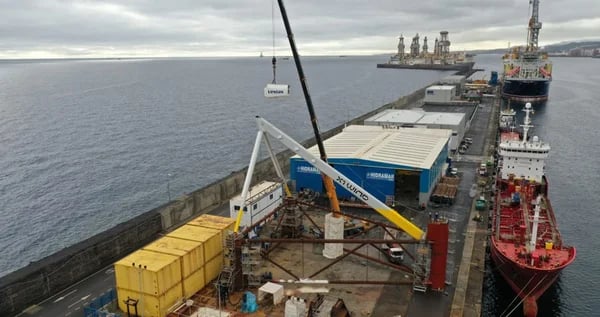PivotBuoy®, developed by a consortium lead by X1Wind and helped by contributions from industrial partners including Cotes, is near completion after 2 years of hard work, testing, and development
Together with X1Wind, Cotes provides dry-air solutions for this innovative pilot project called PivotBuoy that is turning the traditional offshore wind turbine design on its head. The PivotBuoy project will demonstrate the advantages of the system, using a 1:3 scale prototype with a Vestas V29 turbine adapted in a downwind configuration in real operational conditions.
 Above: Installation of the Vestas V29 nacelle [Image source: https://www.x1wind.com]
Above: Installation of the Vestas V29 nacelle [Image source: https://www.x1wind.com]
Why is Cotes involved in PivotBuoy?
When you install a metal structure with sensitive electronic equipment and many moving parts in an offshore environment you need to have a dry-air strategy. The negative effects of humidity and corrosion can have short-term and long-term implications for the operational effectiveness of the project. With over 20 years of industry experience and 80% of the offshore wind turbine market share, we are the go-to company for protecting wind turbines and other structures from the corrosive and destructive effects of unwanted moisture and salt-laden air.
So, when Cotes was approached by a new and innovative project that pushes the boundaries of wind turbine designs, we were naturally interested and curious. X1Wind was looking for a way to protect their vital electronic equipment from the corrosive effects of moist and salt-laden air which is a given when doing any type of construction in an offshore environment. As it is a prototype, it is important for X1Wind that the electrical equipment is protected and always ready to operate at a drop of a hat.
This innovative pilot project proposes an alternative offshore floating wind turbine that integrates the mooring and anchoring system and the electric cable in a single point, called single point mooring (SPM). The goal is to develop wind floating structures that can be assembled and installed using local infrastructure to reduce costs and enhance scalability while maximizing the local content in the areas where the systems will be operating. This approach also untaps the potential of floating offshore wind in remote locations without large port infrastructure, opening new markets, creating local value, and contributing and addressing the current climate emergency.
About PivotBuoy
The PivotBuoy Project aims to validate the benefits of the PivotBuoy system, An Advanced System for Cost-effective and Reliable Mooring, Connection, Installation & Operation of Floating Wind. This will be done by testing a part-scale platform with a Vestas V29 turbine adapted in a downwind configuration and grid connected to PLOCAN test site in the Canary Islands.
The Consortium is formed by nine partners: X1Wind, ESM, WavEC, PLOCAN, INTECSEA, EDP, DTU, DNV GL, and DEGIMA. The project officially started in April 2019 and will last for 36 months.
For further information about the project, you can visit the project’s website:
www.pivotbuoy.eu or follow them on Twitter (@pivotbuoy) or LinkedIn.
This project has received funding from the European Union’s Horizon 2020 research and innovation programme under grant agreement Nr 815159
